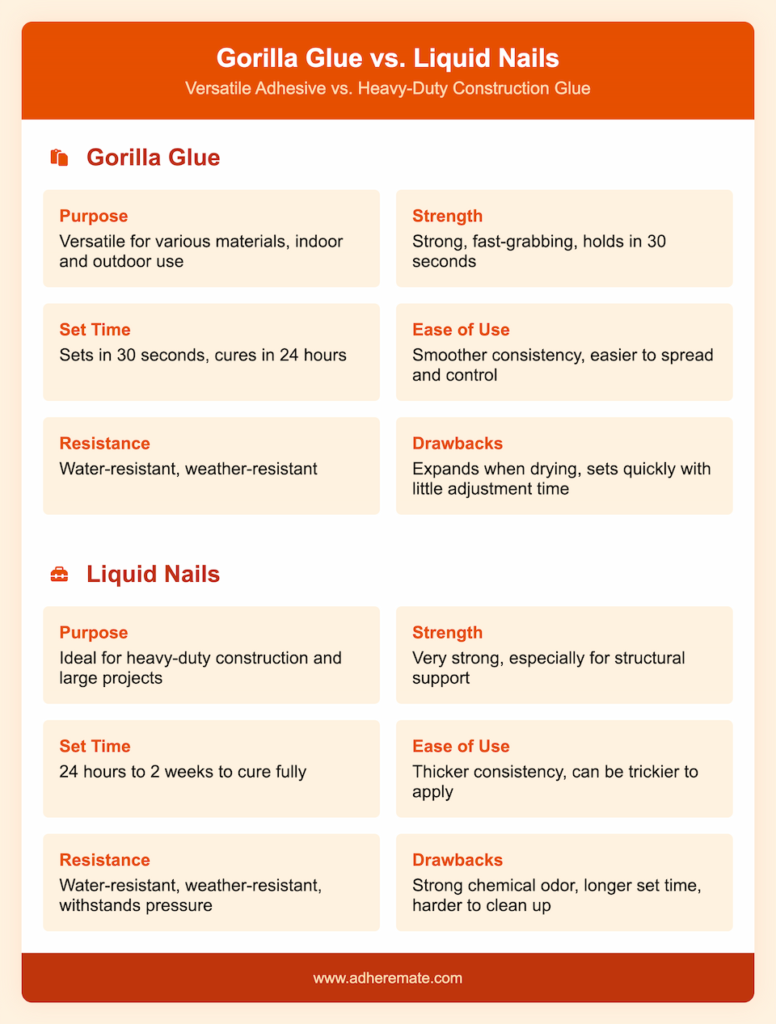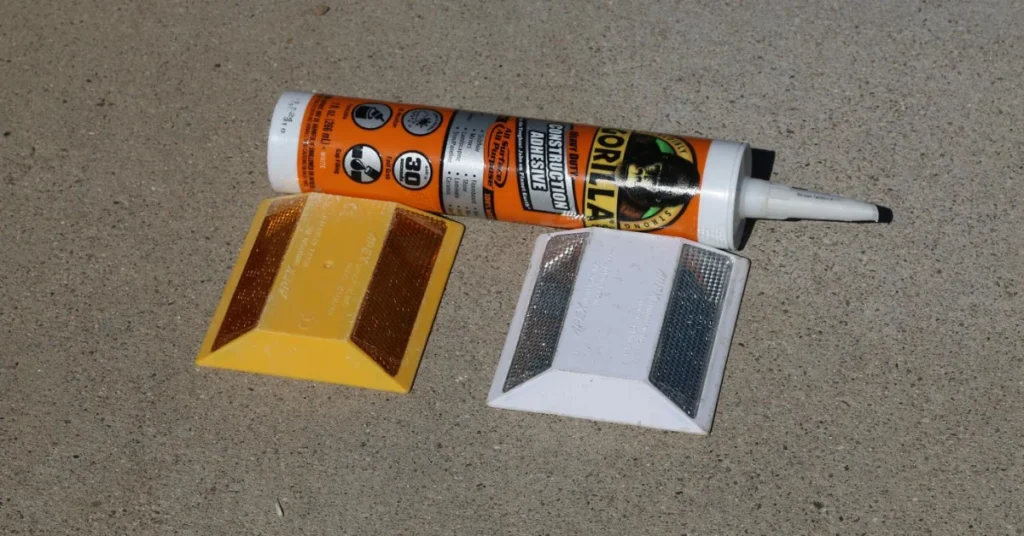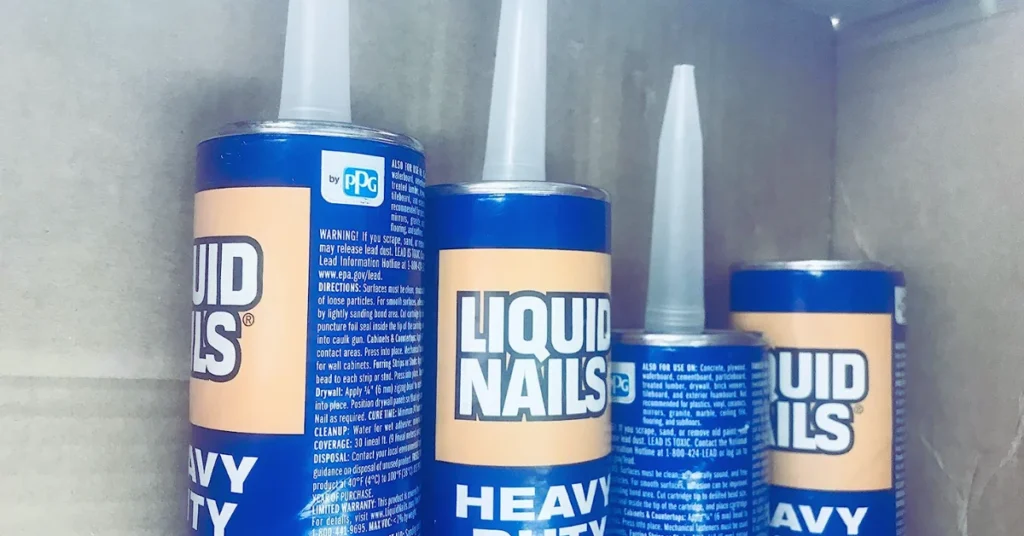You must know which glue is best before starting any construction projects. Your efforts will be in vain if you choose the wrong one or something that doesn’t suit your project.
Today, I will compare Gorilla Glue and Liquid Nails to see their compatibility.
First, Gorilla Glue is super versatile and sets in seconds. On the other hand, Liquid Nails is strong and take one day to weeks to cure fully.
However, you should also know about their strengths, drawbacks, ease of use, etc. Read the article “Gorilla Glue vs. Liquid Nails” to learn more.
Article Highlight
- Gorilla Glue is versatile for various materials; Liquid Nails is ideal for heavy-duty construction.
- Gorilla Glue bonds quickly; Liquid Nails offers greater strength for larger projects.
- Gorilla glue is more accessible to apply and cures in 24 hours; liquid nails is thicker and may take up to two weeks to cure.
- Gorilla Glue can expand when drying; Liquid Nails have a strong odor and a longer cleanup time.
Read More: Krazy Glue vs. Gorilla Super Glue
Gorilla Glue vs. Liquid Nails

Purpose
Both Gorilla Glue and Liquid Nails are versatile adhesives like wood glue that can be used for various applications. Gorilla Glue is suitable for bonding materials such as wood, metal, foam, ceramic, and plastics, making it ideal for DIY projects and light repairs.
On the other hand, Liquid Nails offers a range of formulations, making it suitable for lighter projects (e.g., paneling, molding) and heavy-duty construction (e.g., concrete, bricks). This versatility means that Liquid Nails can be used for general repairs and structural support.
Strength
Both adhesives are strong since they are made for construction materials and have the same purpose.
Liquid Nails can work under pressure and hold a strong bond. The synthetic rubber in Liquid Nails creates a strong bond between brick, wood, drywall, and stone.
On the other hand, the strongest Gorilla Glue is the Gorilla White Heavy Duty Construction Adhesive. It’s fast-grabbing, holds in 30 seconds, and provides a long-lasting, heavy-duty bond.
Versatility
Gorilla Glue bonds with virtually anything, including wood, drywall, ceramics, tile, and more. It’s also suitable for indoor and outdoor use, making it a versatile all-rounder.
Liquid Nails are versatile as well, but they’re more specialized. For example, specific formulas exist for masonry, drywall, and other materials. One of the standout features of Liquid Nails is its ability to act as an excellent gap filler.
Liquid Nails can offer a tailored solution if you know what you’re working with. But Gorilla is your best bet if you need one adhesive for multiple materials.

Ease of Use
Both adhesives come in tubes that fit standard caulking guns, so applying them is quite straightforward.
But Gorilla is usually a smoother ride and easy to use. Its consistency is less sticky and more manageable. So, it is easier to spread and control, with less chance of making a mess.
Liquid Nails are thicker and stickier, which can make application trickier. If they get on your hands or tools, you may have trouble cleaning them off.
Once they are set, removing them can be a headache. Gorilla is the way to go for a fuss-free experience.
Resistance
Both Liquid Nails and Gorilla Glue offer strong resistance to water and can withstand tough weather conditions, temperature changes, and UV light. This makes them suitable for outdoor use.
Due to their resistance, they won’t be easily damaged by heat. Additionally, both adhesives are designed for heavy construction work; they can withstand extreme pressure without compromising the bond.
Set Time
Gorilla Glue sets faster than Liquid Nails. It sets in 30 seconds and takes 24 hours to cure. You can get the initial bond quickly and move on to the next step without waiting too long.
On the other hand, Liquid Nails takes a longer set time. Even though the instruction says it takes 24 hours to cure, some customers said it took them two weeks to set. Which means the temperature can interrupt the curing time.

Drawbacks
One disadvantage of Gorilla Glue is that it tends to expand as it dries, which can get messy if you’re not careful. According to some users, it does not stick well to plastics.
Moreover, Gorilla Glue sets quickly and only provides a little time to adjust the materials. So you have to be careful if you misplace any material.
Liquid Nails, however, have a strong chemical odor and can be challenging to clean up if you make a mistake. Plus, its longer set time means you’ll need more patience to complete your project.
So, while they’re both great in their ways, you need to know these limitations before choosing the right one for your needs!
Editor’s Note
Since both adhesives are great, you can choose them according to your needs.
I lean towards Gorilla Glue for its versatility. I’ve used it for indoor and outdoor projects, like securing trim or fixing minor gaps. It’s not messy and easy to apply. Moreover, it sets pretty quickly, which is a big plus when you want to get things done faster.
But I’d go for Liquid Nails for bigger jobs like heavy-duty construction or projects involving bricks and concrete.
Because of its thicker consistency, it’s a bit more hassle, but the bond strength is unbeatable. Just be prepared to wait a bit longer for it to be fully set.


